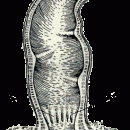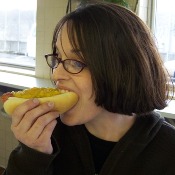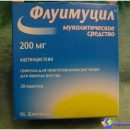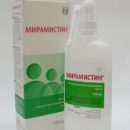Once after the supercooling of the body or during the injury of the tailbone, there may be painful elevation and redness of the skin of the sacrochik. In the future, in the development of inflammation, the suppuration (abscess) arises, which, with improperly autopsy and treatment, it turns into persistently current fistula.
Content
Epithelial cocoic move
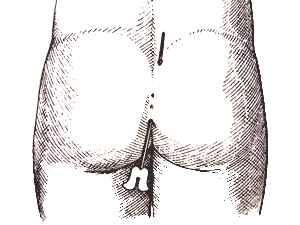 Epithelial cocoic stroke is quite common. In men, he meets more often than women. The disease is primarily susceptible to young people from 15 to 30 years.
Epithelial cocoic stroke is quite common. In men, he meets more often than women. The disease is primarily susceptible to young people from 15 to 30 years.
Epithelial cocoic move, in a different way, this disease is called a cochetic cochetic, dermoid cyan, the spicker fistula and T.D. Americans usually talk about pylonidal sinus. The essence of this disease is that always in the epithelial cleaner progress in the midst of a second-hand line at a distance usually 4-7 cm from the edge of the anus there is at least one hole. It can be point, barely noticeable, and sometimes wide, in the form of a funnel. This is like «Start» Copherie stroke. Patient or patient, usually people of young age, can live for years, not suspecting the presence of the disease.
For various reasons, such as the injury of the tailbone, cooling, influenza state, and sometimes without a visible reason, infection through it.N. The primary hole penetrates deep into the fabric and the inflammatory process in the field of the tailbone and the sacrum begins. Pains, swelling appear, sometimes redness in the projection of the primary hole, or on any side of it (above, below, to the right, left), which forced to appeal to the doctor. In such cases, they talk about the acute stage of the disease, and the patient at the same time, as a rule, will first find out about their disease. The abscess in the cochter region is revealed by doctors, or it is revealed independently, with pain pass, it comes to relief, but in the subsequent in place the revealed opening is formed a secondary fistula, from which fiscal content can be distinguished periodically. The presence of a fistula is – Periodic pain in the scene-coccular area, taching of linen, problems with hygiene
Manifestation of the disease
Despite the fact that the smokehouse is a congenital disease, for a long time the patient may not feel any complaints. Over time, mechanical injuries and blockage of primary holes lead to the delay in the life of the epithelium life and contribute to the occurrence of inflammation. As a result, the wall of the stroke is destroyed and a fatty fiber is involved in the inflammatory process.
The affectionant sometimes reaches a significant value and, as a rule, breaks through the skin, forming an outer hole of the purulent fistula, which is customized to be called the secondary hole. Even with the first exacerbation of the inflammatory process, several purulent cavities and fistula can be formed.
The clinical picture distinguishes the epithelial crying strokes uncomplicated and complicated by the purulent process.
Complication with cockerels
Complicated smoking course may be in the stage of acute or chronic inflammation (fistula) and remission. Upon delayed selection from the course of life products, the epithelium patients marked the appearance of a small painless infiltrate with clear contours that interferes with the movement. When infecting the contents of the stroke and development of acute inflammation, pain appear, the body temperature increases, the skin over the infiltrate becomes edema, hyperemic.
Complications of epithelial cleaned stroke can be:
- purulent abscess,
- Eczema skin,
- Distribution of fistula.
In chronic inflammation of the epithelial cockerel, the general state of the patient suffers a little, there is a scant purulent separated from the holes, edema and hyperemia of the skin. Around the secondary holes, more or less pronounced scar tissue changes appear. Some secondary holes can be frozen, others - function.
With the remission of the inflammatory process for many months or years, the secondary holes of the course are closed by scars, when applied to the area of secretions from the primary holes, it is not possible to enter the probe in them.
In diagnosis, the epithelial cocoic move should be distinguished from cystic formations, the rectum fistula, piederma with fistulas, osteomyelitis of the sacrum bones and the tailbone. Therefore, the rectoroscopy and probe stroke are compulsory research. If the probe is revealed by the direction of the stroke to the crusher or the pad, it is additionally performed by a radiography of the crusher and anchor to exclude osteomyelitis of bones.
Copter treatment
Treatment of epithelial cockery to date only surgical, and only radical surgical intervention allows you to fully heal the patient. The operation consists in the removal of the main epithelial cockerel along with all the primary holes and with all its branches. To date, there are a number of operational interventions, the purpose of which on the one hand excised the entire pathological center, on the other hand, to enter the wound partially, or launching the edges of the wound to the bottom in order to minimize the total healing time. Operations are manufactured after examining and preparing a patient with full-fledged anesthesia (epidural-sacred anesthesia).
In the postoperative period, the patient within a few hours is located in the day hospital of the center until the total normalization of the overall state with a mandatory dropper, anesthesia. Typically, 1-1.5 hours after the operation, the patient starts to walk, drinks enough water, it urins independently. After 6-7 hours, a repeated inspection of the patient, change and fixation of the dressing, after which, accompanied by the machine go home. Subsequently, up to the complete and final healing of the wound, the patient is under the supervision of the doctors of the center.
Sophisticated, perennial shapes of epithelial cockerel with a plurality of fistula strokes, increments, infiltrates operated in stationary hospital conditions.
In normal cases, the operating of the cochoker is transferred to patients easily. Full wound healing is usually occurring within a month after surgery, however, the ability to be restored significantly earlier – from 1 to 3 weeks depending on the nature of the work.

